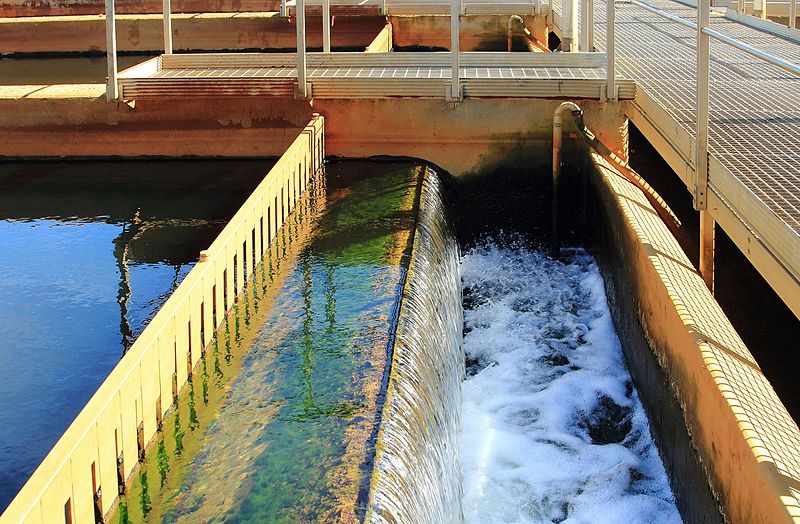
Wastewater treatment is a crucial procedure for protecting public health and the environment. Both decentralized and centralized technologies are used to treat wastewater. Each has unique qualities, benefits, and constraints.
Centralized wastewater treatment
A system of sewers collects wastewater from all surrounding areas and sends it to a single, massive treatment facility when a city or other major municipality treats its wastewater centrally. This central plant uses primary, secondary, and occasionally tertiary procedures to eliminate pollutants from wastewater. Large volumes of wastewater are the reason for its construction.
Decentralized Wastewater Treatment
Decentralized wastewater treatment entails treating wastewater closer to its source, sometimes at the level of individual buildings, communities, or local municipalities. Site-specific package treatment facilities, constructed wetlands, and septic tanks are just a few examples of the many possible systems.
Differences between Decentralized and Centralized Wastewater Treatment
When it comes to managing and treating wastewater, there are two main approaches: centralized and decentralized. Their size, infrastructure, and management are the main points of differentiation. Let’s have a look at what sets them apart:
Decentralized Wastewater Treatment
Characteristics:
- Scale and location
- Treatment of wastewater occurs close to its source, such as in small towns, communities, or households.
- The services are tailored to individual properties or smaller, more localized populations.
- Infrastructure
- Package plants, constructed wetlands, septic tanks, and aerobic treatment units (ATUs) are all systems.
- Utilizing smaller, more localized clusters of units or treatment units lessens the strain on extensive sewer networks.
- Treatment Process
- Mechanical systems (like aerobic units) or natural processes (like wetlands, for example) could be used.
- Treatment typically consists of two phases: primary and secondary. However, this varies greatly across systems.
- Management and operations
- Occasional expert service, inspections, and maintenance may be necessary.
- These are usually overseen by local authorities, community organizations, or homeowners.
Advantages:
- It encourages the reuse of treated nutrients and wastewater on a local level, for instance, in irrigation.
- They are adaptable to both peri-urban and rural settings thanks to their versatile design and easy implementation.
- There is a reduction in energy consumption and initial infrastructure costs.
Disadvantages:
- To be effective, it needs constant maintenance and public education.
- Uncontrolled variations in treatment quality pose potential dangers to human and environmental health.
- There is insufficient capacity to deal with significant amounts of wastewater discharged.
Centralized Wastewater Treatment
Characteristics:
Location and scale
- It usually comprises a single, massive treatment facility situated far from the service area.
- The program covers vast geographic regions and helps large populations.
Infrastructure
- The infrastructure has significant initial costs and ongoing maintenance requirements.
- A vast system of pumping stations and sewers is necessary to transfer sewage from residences and companies to the treatment facility.
Treatment Process
- It usually consists of three steps of treatment to eliminate pathogens, organic matter, solids, and nutrients: primary, secondary, and tertiary.
- Capable of managing sophisticated wastewater treatment systems that process large amounts of wastewater.
Management and operations
- The unified structure of centralized systems makes them easier to oversee and control.
- Trained individuals carry out operation and maintenance under the supervision of local or regional authorities.
Advantages
- The cutting-edge treatment capabilities allow for the safe reuse or discharge of high-quality effluent.
- More efficient treatment of wastewater at a lower cost is possible due to economies of scale.
Disadvantages
The operational and capital costs are high
- Pipe leaks and the environmental impact of large-scale buildings could potentially contaminate the environment.
- A mass exodus may result from a malfunction when dealing with systemic problems.
Both methods have advantages and disadvantages; choosing one over the other usually comes down to special local needs, geographical considerations, population density, and available funds.
Is centralized or decentralized better?
Environmental considerations, economic factors, population density, regulatory requirements, and geographical features should all be part of a thorough evaluation of local conditions before deciding between decentralized and centralized wastewater treatment systems. Centralized systems are typically more practicable and economical in densely populated urban areas. However, decentralized systems may provide more flexibility and cheaper prices in peri-urban or rural areas.
To address the varied needs of different communities, the best balanced and resilient wastewater management plan could be a hybrid model that combines decentralized and centralized solutions. This would allow each system to contribute its own capabilities.
Conclusion
Wastewater management relies heavily on both decentralized and centralized systems. Factors such as financial resources, geographical conditions, population density, and regulatory requirements determine which of the two techniques is better. A hybrid method, which integrates elements of both systems, often offers an ideal solution that balances environmental sustainability, cost, and efficiency.
